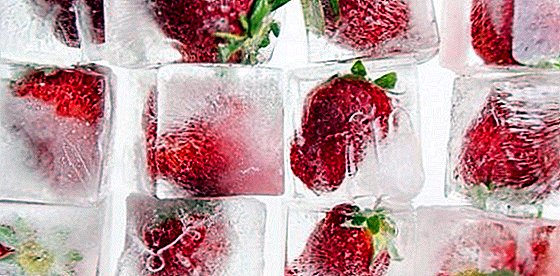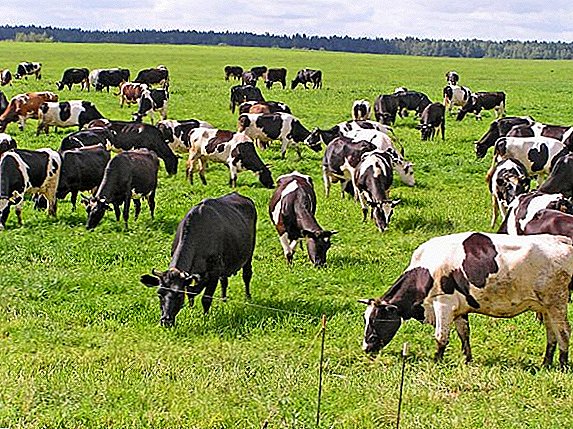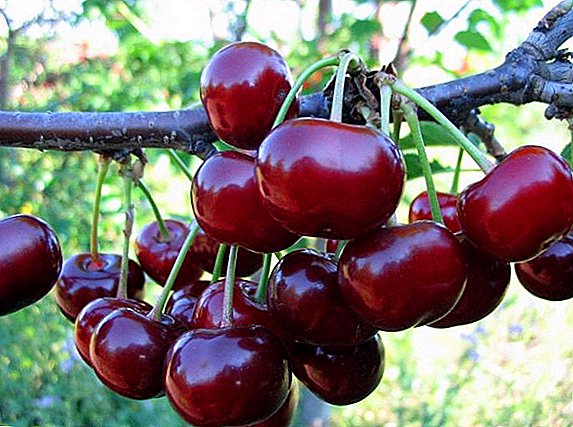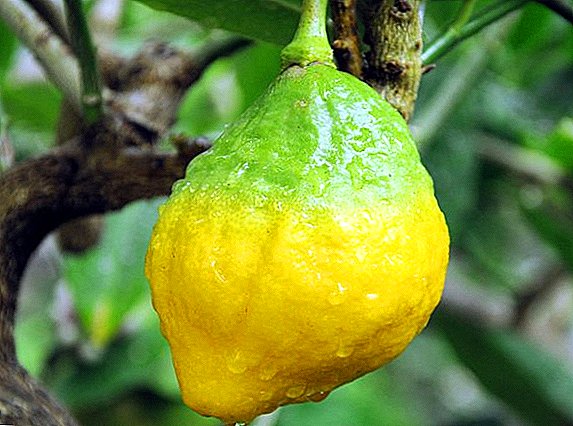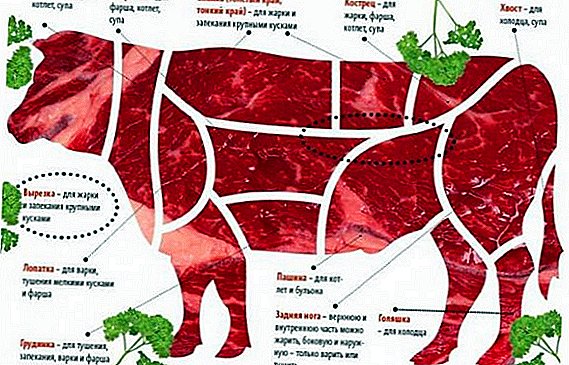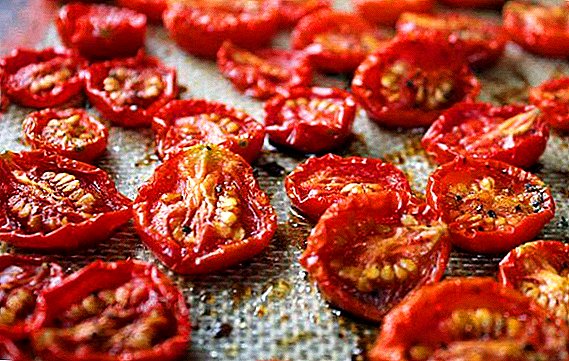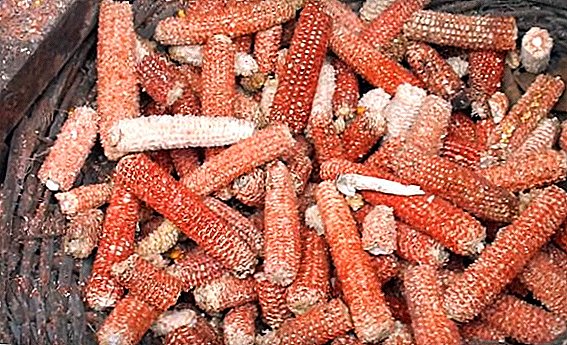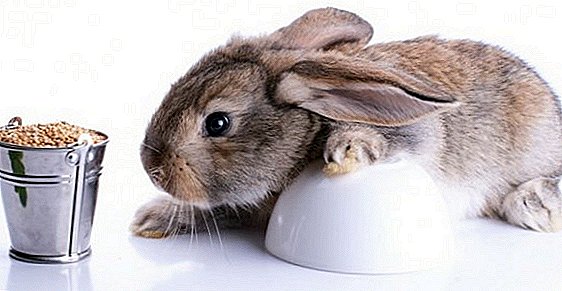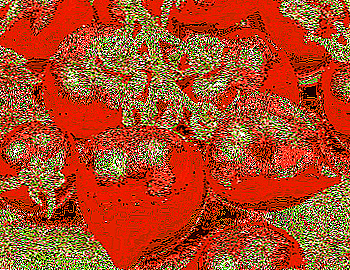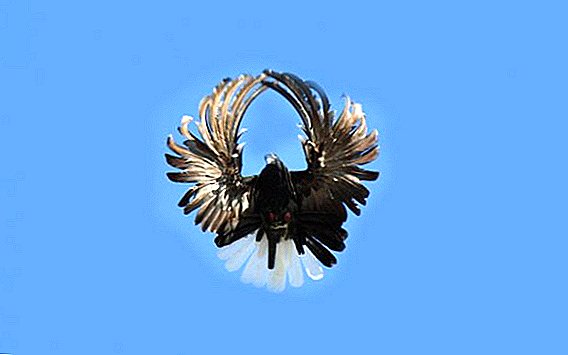 The taming of pigeons by man began when someone noticed their ability to return to their nest. People realize their sense of beauty, bringing new breeds of pigeons - more speedy, aesthetic, etc. Serpast pigeon belongs to the decorative varieties of these birds - we will look at its features in the article.
The taming of pigeons by man began when someone noticed their ability to return to their nest. People realize their sense of beauty, bringing new breeds of pigeons - more speedy, aesthetic, etc. Serpast pigeon belongs to the decorative varieties of these birds - we will look at its features in the article.
History of origin
The exact history of the emergence of serpastus pigeons is not yet known. The breed was bred in Nikolaev at the end of the XIX - beginning of the XX century. Supposedly, for the creation of the breed were used pigeon from Turkey and Syria, as well as local birds.
Learn more about Nikolaev pigeons.
Stimulus for breeding was an unusual flight of these birds. The wings of a pigeon in flight form the shape of a sickle, swinging feathers turn inside out, which gave the name to the breed - sickles, or inversion pigeons. 
Appearance
Exterior crescent pigeon:
- A large pigeon with a weight of about 300 g and a body length of about 30-40 cm. It has a streamlined elongated body with an inclined body setting. In sickles, the pectoral muscles are well developed. The transition of the body to the tail is harmonious, smooth. Chest convex shape. The back of the pigeon is straight, somewhat elongated. Legs are small, strong, non-plucked, red-brown or gray.
- Feather cover thick, dense, usually two-colored. The wings are equal in length with the tail. The average length of the wing is about 30 cm. Fly feathers are long, thin, collected in a bun. Color may be different. The tail plumage is 12-16 white feathers.
- The head is small, rounded and elongated with a proportional small beak. Ceres can be any shade, from white to black. Small eyes of golden color or brown with a pearl shade. Eyes are considered the standard of purity of the breed - the lighter they are, the less impurities from other breeds are. The neck is relatively short, with lush plumage.
Did you know? Eye - its size, shape and color - are the same identifiers of a pigeon, like a person’s handwriting or passport.
Flight features
It is believed that strong sea winds in the Nikolaev region contributed to the development of musculature and the honing of a kind of flight technique - a reaction to the force of the wind. The flapping of the wings forms an almost complete circle above the bird's head. At the same time, outer wing feathers turn out and form a wavelike movement. A pigeon moves in a horizontal plane, which makes it appear that it flies slowly. Birds prefer to fly individually, in flight can be about 3 hours without a break. 
Lifestyles and habits
The breed is special poor terrain orientation, because of which birds may lose their way to the pigeon house. Attempting to minimize this deficiency by crossing with other breeds leads to the disappearance of a special flight pattern, so it is not yet possible to correct this deficiency.
Sicklefish, like other species, form a pair once for a lifetime. When creating birds, pairs of breeders are trying to consolidate the breed signs and, if possible, change the shortcomings.
Birds have an energetic temperament, high activity and vitality. They are unpretentious to the conditions of detention, food and can be grown even by beginners. Representatives of the breed are easy to train, while preferring morning classes.
Did you know? Currently, about 800 pigeon breeds are known. All of them are divided into four main groups: flight, sports, meat and decorative.
Where dwell
The breed was bred in the Nikolaev region, well adapted to life, not only in Ukraine and the southern regions of Russia, but can also live in more northern latitudes. Can settle in the open spaces of the steppe zone and in urban environments.  The number of sickle-headed pigeons is not very large. The population suffered greatly during World War II. Currently, breeders are also working on the restoration of livestock.
The number of sickle-headed pigeons is not very large. The population suffered greatly during World War II. Currently, breeders are also working on the restoration of livestock.
Read also about the breeds of flight pigeons: high flying (Sverdlovsk, Hungarian), fighting (Armavir, Baku, Takla, Uzbek, Agaran, Kasan).
What to eat
They feed on serpentine vegetable foods:
- seeds;
- fruits;
- nuts;
- grass;
- berries
Golubovody enter into the diet of poultry grain wheat, barley, corn. Birds, like other domestic animals, can wait for more tasty feed, so it is better to give food at a fixed time in the right amount so as not to attract wild birds and rodents to food. In the diet of domestic pigeons add wet mash consisting of grains, herbs, bran. Some breeders feed pet feed.
Important! Gravel should always be in the pigeon house in a separate trough. It is necessary for birds for the implementation of food digestion.
Breeding
Pigeons are monogamous birds that form a pair once. During the marriage ceremony, the male takes care of the female, coos loudly, fluffs feathers, dances.  To build a nest in the wild, a couple finds an inaccessible place — under the roof of a roof, in an unattended attic, etc. The male brings building material to the nest - twigs, blade of grass, and the female equips it.
To build a nest in the wild, a couple finds an inaccessible place — under the roof of a roof, in an unattended attic, etc. The male brings building material to the nest - twigs, blade of grass, and the female equips it.
Birds are able to mate year-round, so the female lays about 7 clutches throughout the year, and both parents incubate them for 16-19 days, replacing each other. In the clutch there are 1-2 white eggs.
The hatched chicks are blind and completely helpless. The first days they are fed "pigeon milk", which is a mixture of protein-based nutrients produced in the goiter. As the chicks grow, plant seeds are added to the diet. After 35-37 days, the young growth is fully ready for independent living and can fly. If the pigeon breeder is going to train a new generation, then at the age of 35 days the chicks are taken away from the pigeon-house of their parents to a new place of residence and begin training.
Important! In many countries it is forbidden (up to fine) feed the pigeons in central squares in order to avoid damage to monuments and landmarks.
Is it possible to keep in captivity
Pigeons need a separate room. In the wild, they nest in small caves, rock crevices.  Today there are 3 types of pigeon houses:
Today there are 3 types of pigeon houses:
- freemen;
- dovecote with feeding;
- aviary.
Freemen is a closed room from which pigeons can fly out through small manholes. The light source in this room is narrow windows. If you attach an open-air cage to the freemen, in which the pets can walk, but cannot leave it, you will get a dovecot with feeding grounds.
It is important that predators, wild birds and rodents could not enter the room. It should be clean and dry inside. Unlike farm birds, pigeons do not need additional lighting or heating. They tolerate cold and can even live in an aviary, if it does not get rain and snow. The door to the room is equipped with a threshold, so as not to crush the bird sitting on the floor.
Important! The optimal height of the dovecote is 15 cm higher than the height of the owner. This will facilitate the capture of birds, you will be comfortable to clean the room.
The dovecote equipment consists of boxes-nests with an obligatory roof and a small entrance, perches, perches, feeders and water bowls. Perch should be smooth, painted. Its width is 2.5-3.5 cm, the section is round or rectangular: it should be convenient for grasping with a paw. The width of prisad-perches is 30-40 cm. Mineral feed, grain and greens should be poured into separate feeders.  Housekeeping consists of:
Housekeeping consists of:
- cleaning litter - once in 1-2 weeks;
- washing feeders and drinkers weekly;
- dovecote disinfection at least 1 time per quarter.
The presence of litter will greatly simplify the cleaning of the litter. You will also need equipment for cleaning and cooking feed.
Video: sickle-dovish pigeons
Serpasti pigeons belong to breeding rockscombining high flying and ornamental qualities, they are unique due to their particular manner of flight. These birds are unpretentious in content, easily tolerate any climatic conditions and can fly in any weather.


